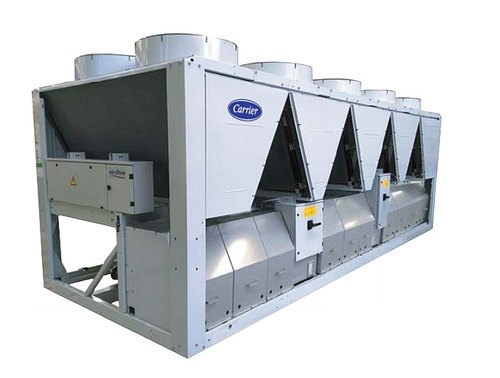Chiller Type Air Conditioner
What is a chiller?
A chiller (cooling water circulation device) is a general term for a device that controls the temperature by circulating a liquid such as water or heat medium as a cooling liquid whose temperature was adjusted by the refrigerant cycle. In addition to maintaining the temperature of various industrial devices and laboratory instruments, equipment and apparatuses at a constant level, it is also used for air conditioning in buildings and factories. It is referred to as a “chiller” because it is often used for cooling.
A chiller can supply chilled water continuously while circulating water in a cooling device. It is used a lot as a suitable device to cool heat generating parts and air conditioning equipment such as laser processing devices and high frequency heating devices at a constant temperature, solves various cooling problems and can reduce running costs while improving energy efficiency.

Differences between the mechanisms of a chiller and freezer
Differences between a chiller and freezer
The role of a chiller is mainly cooling, but a freezer has a similar function. The differences between a chiller and freezer are extremely vague, and some parts may be difficult to comprehend. However, as you can tell from the different names, strictly speaking, they are different devices. So, what are the differences between a chiller and a freezer? Here we will be explaining the differences between them.

Roopokar Trade Center !
It has professionally qualified & Experienced Engineering team. The Company under takes consultancy on total implement turnkey project consisting of design, Engineering Manufacturing, Installation & Troubleshooting of textile machinery, Boilre etc. We are capable of conducting business in large volumes as per best Quality products at very competitive price. We always focus on the investment and upgrading technology manufacturing, expansion, raising Quality products.
Hey, We are looking Forward to start a project with You !
Roopokar Trade Center, a broadly acclaimed name to serve environmental sustainable solutions to the different industries across continents for more than one decade, covers the end to end value chain from designing to construction and operations as well as maintenance.